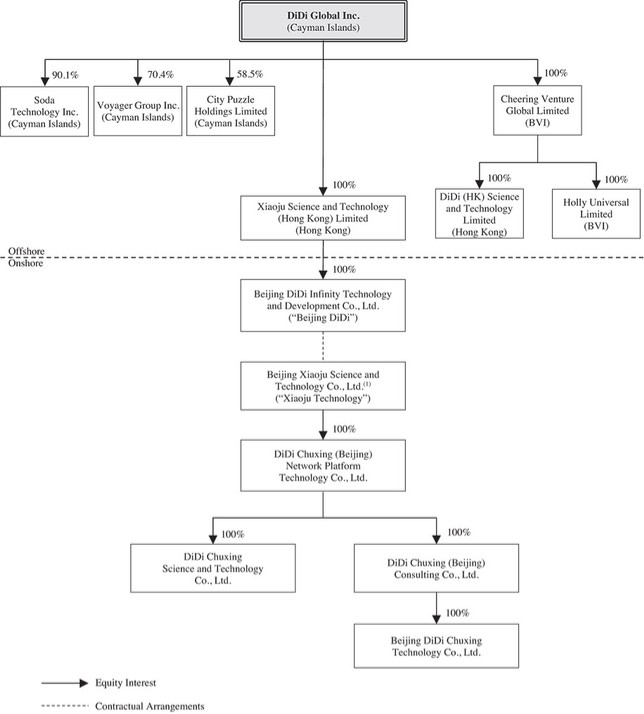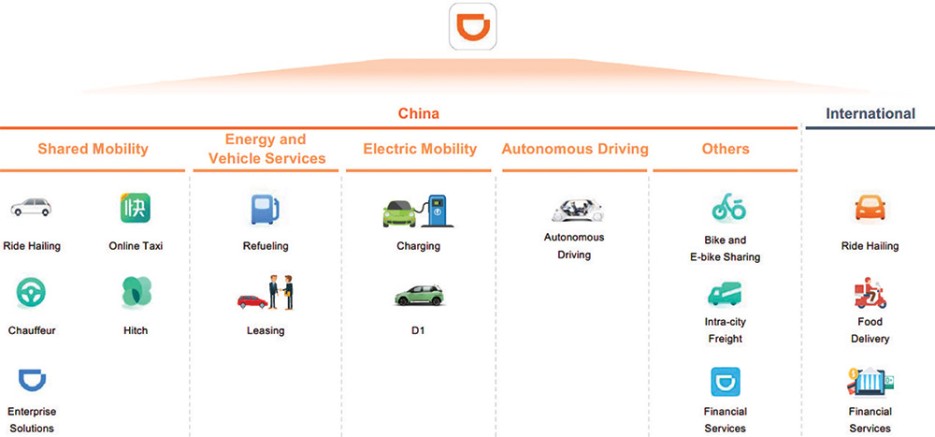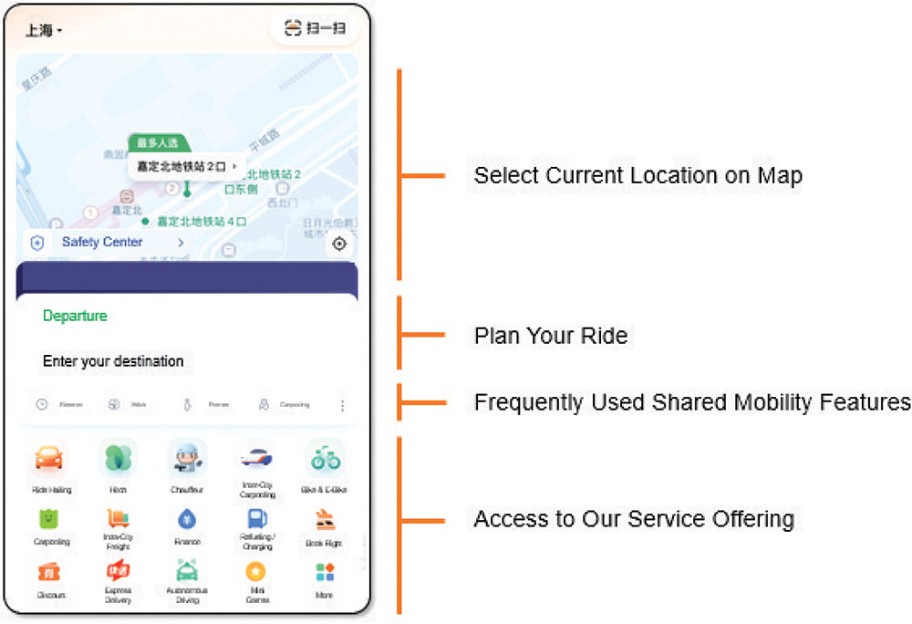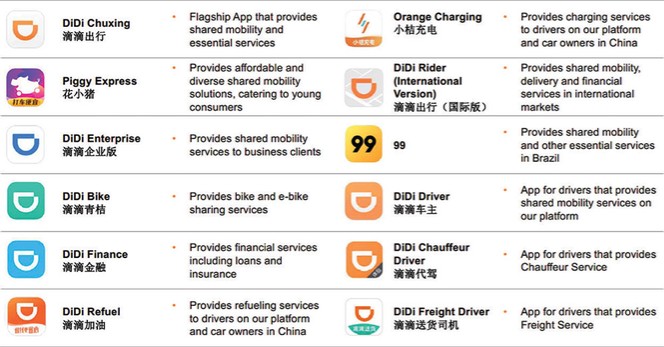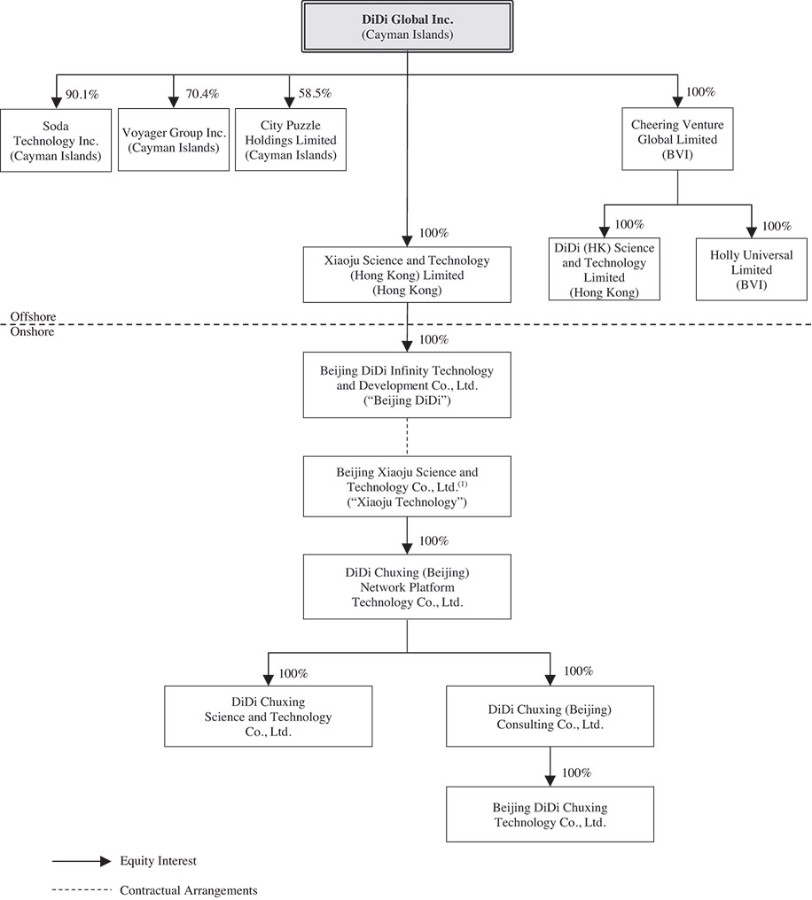Legal and Administrative Proceedings
We are regularly subject to various types of legal proceedings by drivers, consumers, employees, commercial partners, competitors, and government agencies, among others, as well as investigations and other administrative or regulatory proceedings by government agencies. In the ordinary course of our business, various parties claim that we are liable for damages related to accidents or other incidents involving drivers, consumers or other third parties on our platform. We are also subject to contractual disputes with drivers and other third parties. We are currently named as a defendant in a number of matters related to accidents or other incidents involving drivers, consumers and other third parties, and in matters related to contract disputes. Furthermore, we are involved in disputes with third parties asserting, among other things, alleged infringement of their intellectual property rights.
Starting in July 2021, we and certain of our officers and directors were named as defendants in several putative securities class actions filed in federal court in New York and California. These actions alleged, in sum and substance, that the registration statement and prospectus prepared for our June 30, 2021 initial public offering contained material misstatements and omissions in violation of the Securities Act of 1933, the Securities Exchange Act of 1934 and Rule 10b-5 promulgated thereunder. In September 2021, plaintiffs voluntarily dismissed all actions filed in federal court in California. On October 12, 2021, the U.S. District Court for the Southern District of New York appointed lead plaintiffs and lead counsel and consolidated the remaining federal actions under the caption In re Didi Global Inc. Securities Litigation, No. 1:21-cv-05807-LAK. Lead plaintiffs in the consolidated action filed a consolidated amended complaint on January 7, 2022. We moved to dismiss the consolidated amended complaint on March 8, 2022. In response, lead plaintiffs further amended their complaint, filing a Second Amended Complaint on May 5, 2022. On June 3, 2022, we moved to dismiss the Second Amended Complaint. On March 14, 2024, the court denied the Company’s and other defendants’ motions to dismiss the Second Amended Complaint. We cannot predict the timing, outcome or consequences of this action, and there is no basis to conclude at this point whether such action will be successful or whether the Company will be subject to any damages and, if so, how much.
Separately, in December 2021, we and certain of our officers and directors were named as defendants in a putative securities class action filed in state court in New York, which similarly alleges that the registration statement and prospectus prepared for our June 30, 2021 initial public offering contained material misstatements and omissions in violation of the Securities Act of 1933. On April 22, 2022, the parties stipulated to stay the state court action pending the outcome of motion to dismiss briefing in the federal action. The state court action remains in its preliminary stage. We cannot predict the timing, outcome or consequences of this action, and there is no basis to conclude at this point whether such actions will be successful or whether we will be subject to any damages, let alone how much.
On July 2, 2021, the Cybersecurity Review Office posted an announcement stating that we were subject to a cybersecurity review and that the Cybersecurity Review Office required us to suspend new user registration in China during the review. On July 4, 2021, the CAC posted an announcement stating that our DiDi Chuxing app collected personal information in violation of PRC laws and regulations. Pursuant to the PRC Cybersecurity Law, the CAC notified app stores to take down the DiDi Chuxing app and required us to strictly comply with relevant laws and regulations, follow the relevant standards set by the PRC government authorities, and rectify the problem to ensure the security of users’ personal information. On July 9, 2021, the CAC posted an announcement stating that it had been confirmed that 25 of the apps that we operate in China, including apps used by users and drivers, had the problem of collecting personal information in serious violation of relevant PRC laws and regulations. Pursuant to the PRC Cybersecurity Law, the CAC notified app stores to take down these apps, and required us to strictly comply with relevant laws and regulations, follow the relevant standards set by the PRC government authorities, and rectify the problem to ensure the security of users’ personal information.
Pursuant to the PRC Cybersecurity Law, if a cyberspace operator or a cyberspace product or service provider infringes upon the legal rights of individuals’ personal information in violation of the relevant provisions under the Cybersecurity Law, it may be ordered by a competent authority to make rectifications, and may, depending on the seriousness of the case, be subject to warnings, confiscation of illegal gains, and/or monetary fines. In serious cases, the competent authority may order it to suspend relevant business, suspend business for rectification, close the website or revoke its relevant business permit or license. In addition, violation of the PRC Personal Information Protection Law may give rise to an order to rectify, warnings, confiscation of illegal gains, suspension or termination of services through the app illegally processing the personal information, monetary fines, and/or the suspension of business or revocation of business licenses or operating permits.
In 2022, we fully cooperated with the PRC government authorities on the cybersecurity review and rectification measures. On January 16, 2023, with the approval of the Cybersecurity Review Office, we resumed the registration of new users on DiDi Chuxing. We will continue to take effective measures to protect the safety of our platform infrastructure and security of big data, and safeguard national cybersecurity. An administrative fine of RMB8.026 billion was imposed for the violation of the Cybersecurity Law, Data Security Law and Personal Information Protection Law and was paid in the year ended December 31, 2022. Our active apps have been restored to app stores and we will continue to monitor and comply with the relevant statutes and regulations on cybersecurity.
